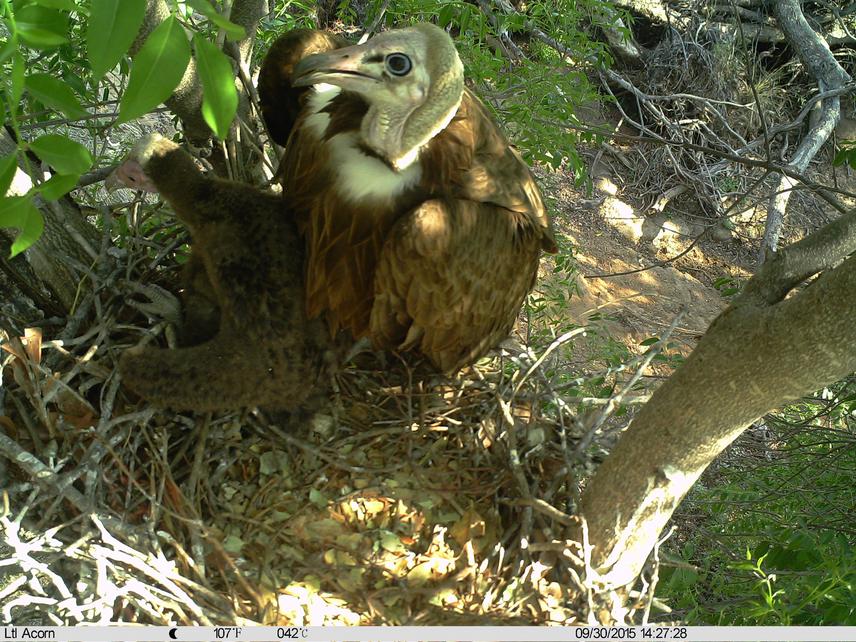Lindy Jane Thompson
Other projects
14 Mar 2017
Ecology and Movements of the Hooded Vulture, Necrosyrtes monachus, in the Kruger-to-Canyons Biosphere Reserve, South Africa
The project aims to investigate Hooded Vulture breeding ecology, feeding ecology and movements, in the Kruger-to-Canyons Biosphere Reserve, South Africa.

Adult and chick Hooded Vulture during 2015 breeding season.
The Hooded Vulture has declined by 50% in the last 50 years, resulting in its current classification as Critically Endangered (BirdLife International 2015). The South African population is small (50-100 breeding pairs) and very likely dependent on protected areas and/or areas of low human density for survival. In addition to this unfavourable conservation status, the Hooded Vulture in southern Africa has received scant research attention compared with other species. Thus, there is a need to gain a better understanding of the Hooded Vulture (and other vulture species) in the Kruger-to-Canyons Biosphere Reserve. This project will make a substantial contribution to this gap in knowledge.
The K2C Hooded Vulture Project will investigate the breeding ecology, movement ecology and feeding biology of the Hooded Vulture, Necrosyrtes monachus, in the Kruger-to-Canyons Biosphere Reserve, South Africa. This secretive species is little studied, yet a 50% decline in its numbers in the last 50 years suggests that urgent attention is needed for effective conservation measures to be implemented. This 3 year post-doctoral study will elucidate the basic biology of the species for informing a species conservation plan, and implement environmental education in and near rural communities where Hooded Vultures and other endangered vulture species are routinely poisoned.
The project will be conducted in the Kruger-to-Canyons (K2C) Biosphere Reserve, a 2.5 million hectare region which links the Limpopo and Mpumalanga provinces in the north-eastern part of South Africa. This reserve was registered by UNESCO in 2001, and encompasses the Kruger National Park and the Blyde River Canyon. It includes a high level of endemism, and was established with the aim of protecting species, landscapes and ecosystems, while encouraging the sustainable use of ecosystems by local communities. The K2C Biosphere Reserve holds the vast majority of the South African Hooded Vulture population.
Field work in 2015 was aimed at establishing good working relationships with reserve wardens and land owners in the study area, in order to gain land access and conduct nest searches. Some nesting areas have been identified, and other areas ruled out as Hooded Vulture nest sites. In 2016, nest searches will continue, and more camera traps will be installed at nests over a wider geographical area, with the main aim of identifying nest predators, as preliminary work in 2015 suggests that the risk of predation of nestlings is high. Awareness activities will continue, with a focus on involving local people from rural communities.